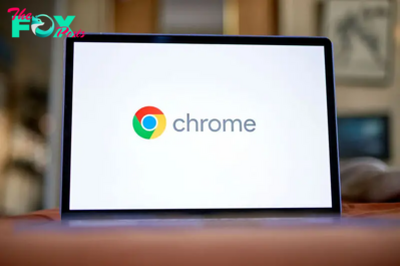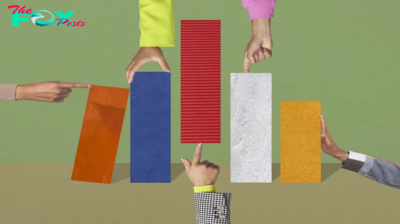Business
What Happens to Those Solar Panels When Solar Companies Shut Down
When a door-to-door salesman showed up at Christine Palmer’s door in 2022 telling her she could save money by going solar, she and her husband decided to make the investment.
Two years later, the panels have never been switched on and the company that installed them—Titan Solar—has abruptly gone out of Business, leaving Palmer with a shiny but useless array on her roof.
Even if she could get someone to fix the panels, Titan installed them in a way that doesn’t pass inspection in her town of Lindenhurst, Ill., meaning someone would have to redo the whole installation before the panels could be turned on, she says.
Meanwhile, GoodLeap, the company that loaned her the money to buy the panels, is still calling constantly, trying to collect on the loan, she says. Titan was supposed to come out to try to fix the panels on a Friday after dozens of previous attempts, but on Thursday night she started seeing on Facebook that Titan was going out of Business. Palmer confirmed that the company was kaput and her emails to representatives bounced back as undeliverable. “Our system has not worked for one hour,” she says. “Yet there’s no protection for us at all.”
Read More: Another Solar Company Goes Bust
Titan was the largest solar installer to close its doors when it shut down June 13, according to research firm Wood Mackenzie, but customers like Palmer are not alone in having nonworking panels on their homes and nowhere to turn. Thousands of customers from a company called Pink Energy were put in the same position when Pink filed for bankruptcy in October 2022. Dozens of other solar firms have failed this year as well, including Infinity Energy, Solcius, and Kayo Energy.
“We pretty much have a $70,000 roof ornament at this point,” says Jasmine Hendrickson, who had a system installed by Pink Energy a week before the company went out of Business. The system has not passed inspection and is not hooked up to the electrical grid.
To be sure, the overwhelming majority of residential solar systems work just fine. But if just one percent of the panels of the 4.5 million households with solar fail, that’s 45,000 unhappy customers. And there aren’t many protections for homeowners because the solar industry is still largely unregulated. In most states, anyone can knock on your door and try to sell you solar panels, even if they don’t actually work for a solar company. (Solar companies contract out sales to something called dealer networks that are essentially sales shops.) The salesperson can promise that you won’t have an electric bill, that you’ll receive tax incentives from the government, and that you’re going to save money on solar, but by the time your panels are actually installed, that salesperson may have disappeared and the company installing your panels may be the brink of failure.
Read More: How Solar Sales Bros Threaten the Green Energy Transition
Installers that are struggling often do shoddy work, says Ara Agopian, the CEO and founder of SolarInsure, which manages and insures solar systems, including around 10,000 that have been “abandoned,” meaning the installer went out of Business. “The workmanship is not great when a company is about to fail,” he says.
What’s more, some solar companies offered warranties for solar panels, promising to fix broken panels for up to 25 years, but then did not set aside money to fulfill those warranties and fix nonworking systems, says Agopian. That means they can’t fix the panels—and the cost of trying to maintain all those systems sends them into bankruptcy.
Analysts are predicting even more solar bankruptcies this year as high interest rates and changing policies about how much people can get compensated for their solar power dampen consumer enthusiasm. Wood Mackenzie says that residential installations will shrink by about 14% this year.
Read more: The Solar Power Industry Is in Trouble
Even if the rate of bankruptcies slows, some people in the solar industry think there are going to be a lot more people with solar panels stuck on their homes. When customers sign a solar lease or power purchase agreement (PPA), the solar company agrees to cover the cost of the panel removal when the lease is up, usually after 20 years. But big companies like SunRun assume that 90% of customers will renew their agreement and keep their panels, according to a report by the research firm Muddy Waters. (Muddy Waters is shorting, or betting against, SunRun’s stock.)
Muddy Waters says this promise also “fails the laugh test” because by the end of 20 years, most homeowners will need to replace their roof, and because the solar-panel Technology will be obsolete by then. It estimates that SunRun will have to spend $668 million on system removals when the leases and PPAs are up—and that the company has not set aside that money. (In a detailed response to Muddy Waters, SunRun says that it believes that the “assumptions, estimates, and disclosure we have provided are market-appropriate.”)
The idea that big companies aren’t accounting for the cost of removing panels from homes is a theory that Pol Lezcano, senior associate at BloombergNEF, finds believable. Big companies use their cash “to originate and sell new systems,” he says. “I doubt they are planning to have cash aside to remove panels when contracts expire.”
Some homeowners have tried to take repair and removal into their own hands. They include Johann Bowman. His 83-year-old uncle bought $110,000 worth of solar panels from Pink Energy in 2021, but one of the parts in the installation was defective. The system didn’t work so Bowman started calling around to electricians and solar companies to see if anyone could fix it.
The first three companies said they wouldn’t touch the system once they heard Pink Energy was involved, he says. The fourth company wanted $50,000 to fix the system, which Bowman thought was far too high. “He told me, ‘Without me, you’re dead in the water,’” Bowman says. He finally called a fifth company, which got the system up and running for $2,500. But it still doesn’t produce what the salesman promised his uncle it would. His uncle’s house, Bowman says, is covered by trees—the salesman should never have registered the house for solar in the first place..
-

 Business1d ago
Business1d agoNew Information: These HV Big Lots Are Now Staying Open
-

 Business1d ago
Business1d agoBrush Fire Rages On Near Butternut In Great Barrington, MA
-

 Business3d ago
Business3d agoCarbon offsets can help bring energy efficiency to low-income Americans − our Nashville data shows it could be a win for everyone
-

 Business3d ago
Business3d agoWorkplace diversity training programs are everywhere, but their effectiveness varies widely
-

 Business3d ago
Business3d agoFirm bosses urged to make use of Welsh language to revitalise rural economic system
-

 Business4d ago
Business4d agoDonor-advised funds are drawing a lot of assets besides cash – taking a bigger bite out of tax revenue than other kinds of charitable giving
-

 Business4d ago
Business4d agoClimbing Fans: A New Place to Boulder and More in Kingston
-

 Business5d ago
Business5d agoThe Anchovy Debate: Pizza Lovers’ Strong Feelings In Hudson Valley



























